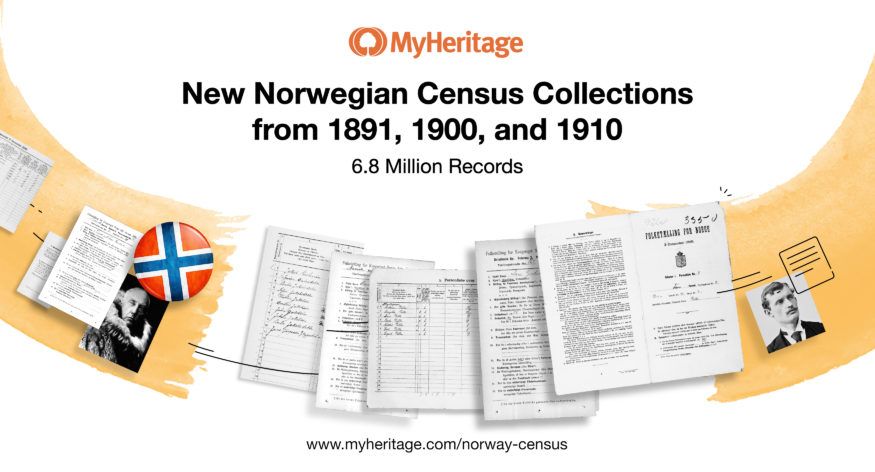

We’re happy to announce the addition of three important census record collections from Norway, from 1891, 1900, and 1910, to MyHeritage SuperSearch™. Added in collaboration with the National Archives of Norway (Arkivverket), these 6.8 million new records are rich in family history information.
The collections provide robust coverage for Norway’s entire population during a span of two important decades in Norwegian history. Two of the collections include digital images of the original historical records. This is the first time that Norwegian collections of such high quality are available.
Search the Norwegian collections now
With the release of these new collections, MyHeritage now offers approximately 34 million historical records from Norway, including census, baptism, marriage, and burial records. As the Scandinavian market leader for family history research and DNA testing, MyHeritage also offers 136 million records from neighboring Sweden and 105 million records from Denmark. MyHeritage is the only major genealogy company to provide its services and full customer support in all three Scandinavian languages, as well as in Finnish, and offers the greatest potential for new family history discoveries for anyone with Scandinavian origins. It also has the largest user base in Scandinavia and the largest collection of Scandinavian family trees.
With the exception of Ireland, no other country saw a larger percentage of its population emigrate to the United States than Norway. Search these new Norwegian collections to learn more about your ancestors’ lives, and enhance your family tree with fascinating family history discoveries.
Here is more information on these collections:
| Collection | Description | Number of Records | Exclusive to MyHeritage | Link to Search |
|---|---|---|---|---|
 1891 Norway Census | Census conducted on January 1, 1891, providing information on every living person in Norway at that time, as well as sailors on Norwegian ships at home ports or abroad. All records have an accompanying digital image. | 2,064,661 records | Not Exclusive | Search collection now |
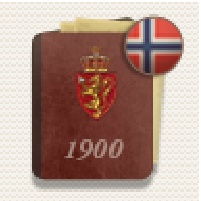 1900 Norway Census | Contains similar information collected in the 1891 census with expanded survey information. Most records have an accompanying digital image. | 2,313,871 records | Not Exclusive | Search collection now |
 1910 Norway Census | The most recent census available due to Norwegian privacy laws. Contains full birth dates for most people. | 2,474,627 records | Not Exclusive | Search collection now |
1891 Norway Census
The 1891 census was conducted on January 1, 1891, and provides information on every living person in Norway at the time, as well as sailors on Norwegian ships at home ports or abroad.
The collection contains 2.1 million records with names, genders, residences, relationships, marital status, birth years, and birthplaces. This census is unique in that married women were asked about their kinship with their husbands. All records have an accompanying digital image of the original census document.
This census departed from previous Norway censuses by using civic municipalities, rather than ecclesiastical parishes, as the census districts for rural areas. The 1891 census is also unique because it did away with the list format used in previous censuses and instead used a separate form for each individual. This allowed the government to collect more information than they had in the past, such as information about the living arrangements of each citizen, the relationship between spouses, as well as the language and cultural information of the indigenous Sámis.
As each individual in the census has his or her own census questionnaire, which is presented in the collection as a digital image associated with each indexed record, a researcher will need to examine the records and images associated with other family members to see all information recorded for a family group. Additional information not present in the index, such as occupation, can be found in the digital images.
Municipality names and borders have changed significantly since this census was completed. The names of municipalities in this index may have spellings and borders that do not match current municipalities. Detailed information about municipality changes may be found through the National Archives of Norway.
This time period was critical in Norway’s history as it was the beginning of the Union Battle between Norway and Sweden which began in 1881, and ended when Norway gained independence in 1905.
Within the 1891 census, we found a record for Christian Michelsen, or Peter Christian Hersleb Kjerschow Michelsen (1857-1925), lawyer, shipping magnate, and politician.
Michelsen was born in the city Bergen on the west coast of Norway, where he went to school. He studied law at The Royal Frederick University in Oslo. In 1891 he was elected to the Norwegian Parliament and in 1905 became Prime Minister. He was instrumental in the social and political movement to dissolve the union between Norway and Sweden, making him a monumental character in Norway’s history.
1900 Norway Census
The 1900 Norway Census was taken on Monday, December 3, 1900, and used one form for each household.
This collection of 2.3 million records contains names, genders, residences, relationships, marital status, birth years, some full birth dates, and birthplaces of all persons living in Norway and sailors on Norwegian ships. 1.9 million records from this collection now have digital images of the original documents associated with the census index, and images of the remaining records will likewise be connected to the index in the near future.
Following a precedent that was established with the census taken in 1891, this census used civic municipalities rather than parishes as the census districts for rural areas of Norway. The 1900 census continued to increase the information collected regarding living arrangements, but is otherwise very similar in the information it collected to the previous 1891 Norway Census. It is important to note that most people enumerated in this census will not have a full birth date (but rather a birth year only) because full birth dates were not collected for individuals over the age of two.
The motivation for the change from the individual forms of the 1891 census to the household lists used in 1900 was the use of the Herman Hollerith Tabulating Machine. First used with much success in the 1890 U.S. Federal Census, many other countries, including Norway, adopted the technology for their own censuses. Information was transferred from census documents to punch cards which were then run through tabulating machines, thereby significantly reducing processing time traditional performed by clerks.
Municipality names and borders have changed significantly since this census was completed. The names of municipalities in this index may have spellings and borders that do not match current municipalities. Detailed information about municipality changes may be found through the National Archives of Norway.
Additional information not present in the index, such as occupation, can be found on the digital images.
An interesting and well-known name is among the records in this collection — Edvard Munch, the famous Norwegian painter. Edvard Munch, 1863-1944, was born in Løten and moved to Oslo with his family at the age of 14. He attended the Royal School of Art and Design in Kristiania (known today as Oslo) and became one of the most famous and influential artists in Norway’s history. His paintings were often an expression of his psychological state and portray the distress and tragedy that he experienced throughout his life, such as the deaths of his mother and sister.
His most famous painting, The Scream, is a representation of personal angst. The Scream has become one of the most iconic images of universal art. It was sold in May 2012 for $119.9 million, making it the second most expensive piece of art ever sold at an open auction.
The collection shows the handwriting of those listed. In this record you can see Edvard Munch’s unique signature.
1910 Norway Census
The 1910 Norway Census was taken on Thursday, December 1, 1910, and continued on the subsequent business days, until it was completed. This census is the most recent census available due to Norwegian privacy laws, which restrict public access to census data for 100 years.
The collection contains 2.47 million records and is comprised of an index of transcribed records provided by the National Archives of Norway. It includes names, genders, residences, relationships, marital status, birthplaces, and for the first time, for most people, full birth dates (day, month, and year). The full birth dates are extremely useful for searching for records in this collection.
Inclusion of full birth dates for most people makes the 1910 census a genealogically important substitute for the National Birth Index for Norway in 1910. This was also the first census conducted following the dissolution of Norway’s union with Sweden in 1905. Following Norwegian independence, Norwegian society underwent a period of significant national pride. As a result, many of the municipality and city names associated with Danish or Swedish rule were replaced with more traditional Norwegian names. For example, the capital, Kristiania, originally named after Danish King Christian IV, was renamed Oslo in 1924.
The many changes to the names and borders of municipalities in Norway can present significant obstacles for genealogists. Detailed information about the border and name changes within Norway can be found at the National Archives of Norway.
The famous polar explorer, Roald Engelbregt Gravning Amundsen (1872-1928), is found in this collection. Born in Østfold, Norway, he is known for his many expeditions to the Arctic and Antarctica. He was a key figure of the Heroic Age of Antarctic Exploration, and led the first expedition to traverse the Northwest Passage in 1906, the first expedition to the South Pole in 1911, and flew over the North Pole in 1926.
Sadly, he disappeared in 1928 on a rescue mission in The North Pole with the airship Italia, where 17 crew members and rescuers were all reported dead.
How to view the new collections
This newly digitized content is already available for searching in SuperSearch, our global search engine for historical records at www.myheritage.com/norway-census.
In addition, our Record Matching technology will automatically give you relevant historical records from the new collection that match individuals in your family tree. If your family tree is not yet on MyHeritage, upload your family tree as a GEDCOM file, and you can immediately benefit from Record Matches from this collection.
Searching the Norway census collections is free. A subscription is required to view records and Record Matches.
Conclusion
MyHeritage is the prime destination for researching Scandinavian roots. With the addition of the Norway censuses, MyHeritage continues to lead the way in Nordic genealogy. We’re continuously working on digitizing and indexing historical records from all over the world to help you learn more about your ancestors’ lives and uncover your past.
We invite you to search these invaluable collections to discover your Norwegian roots.

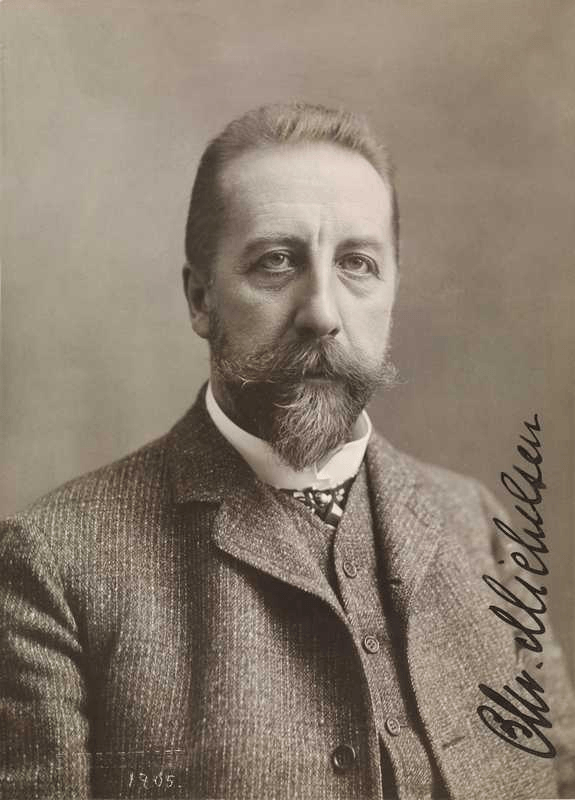
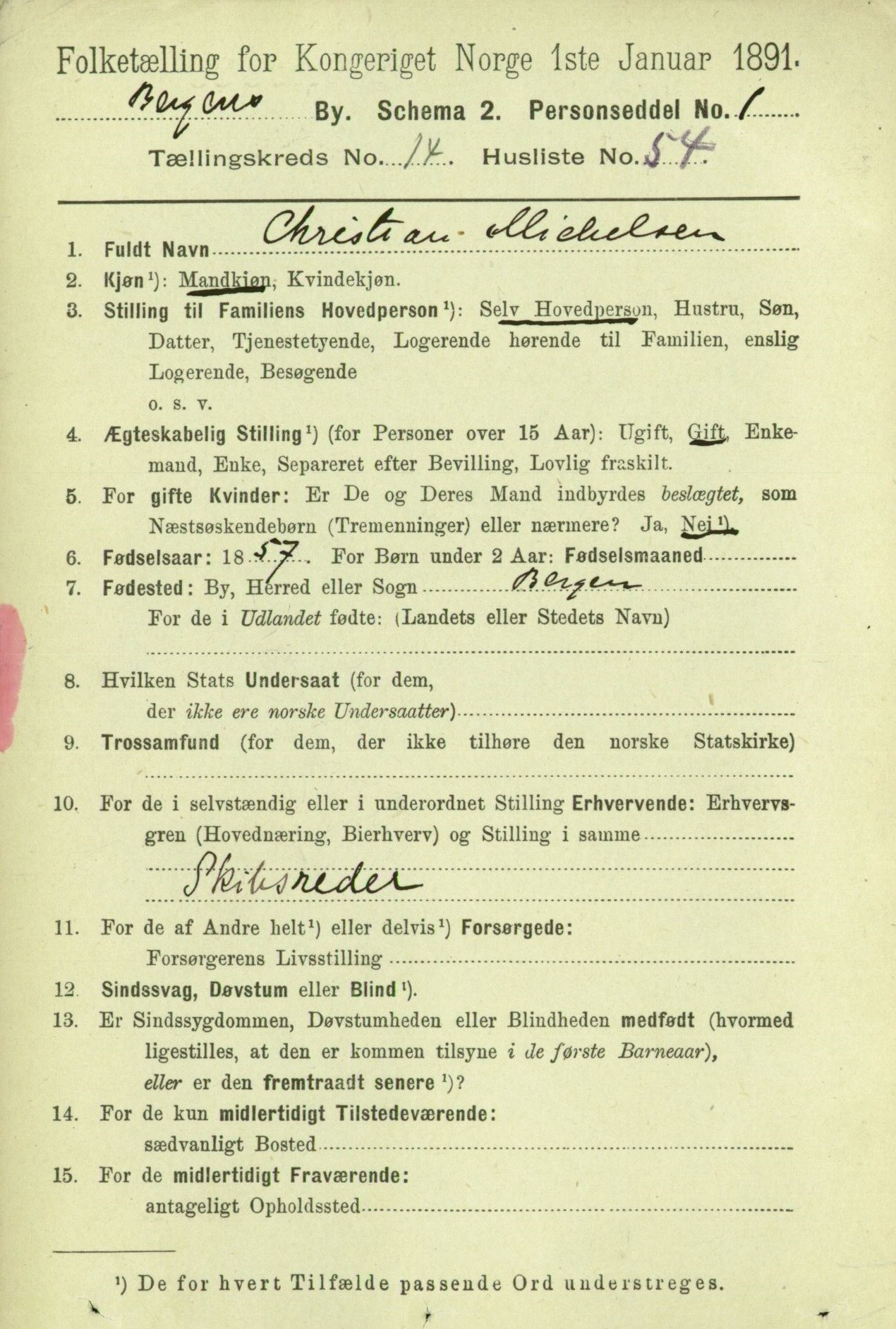
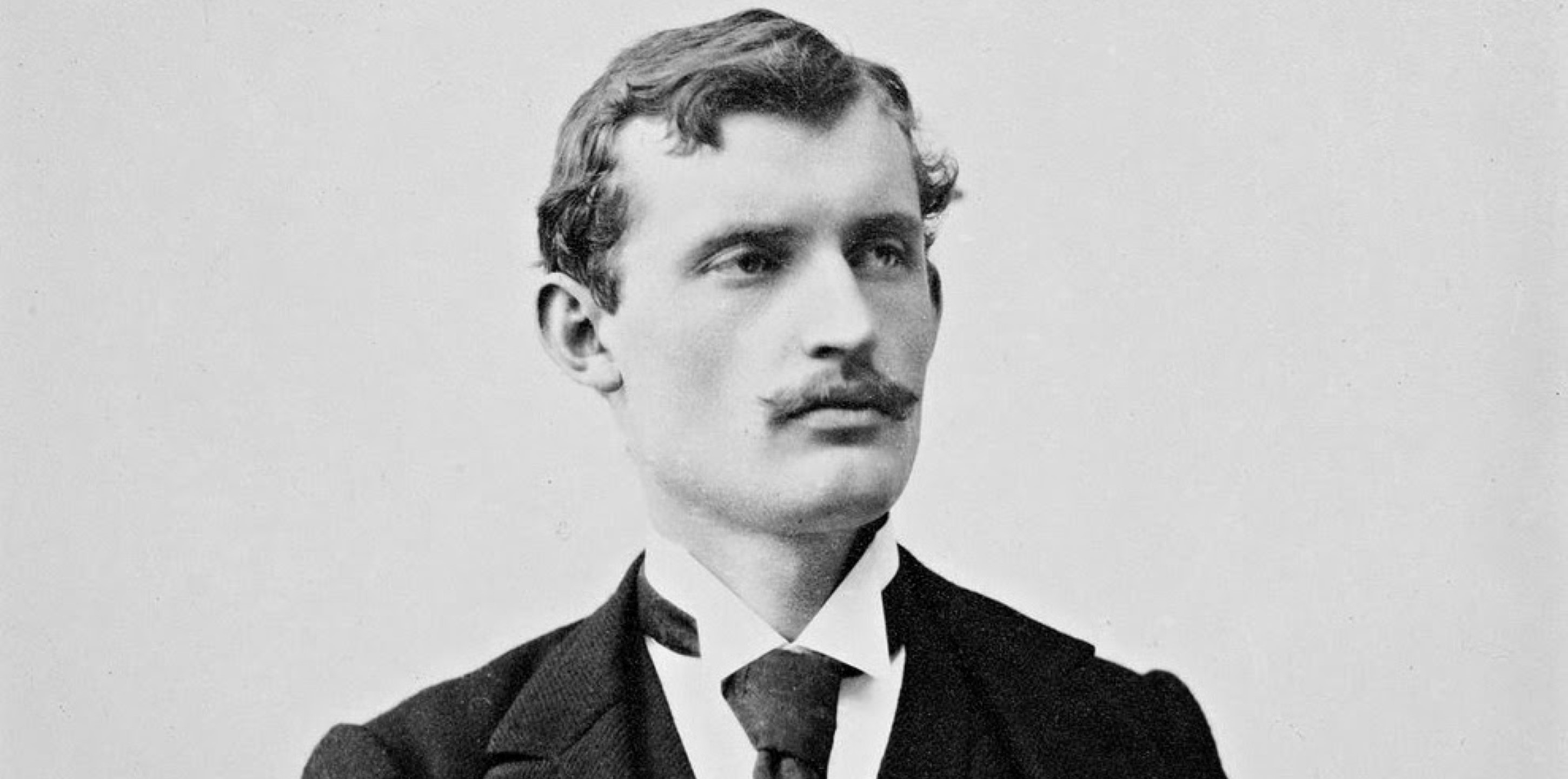

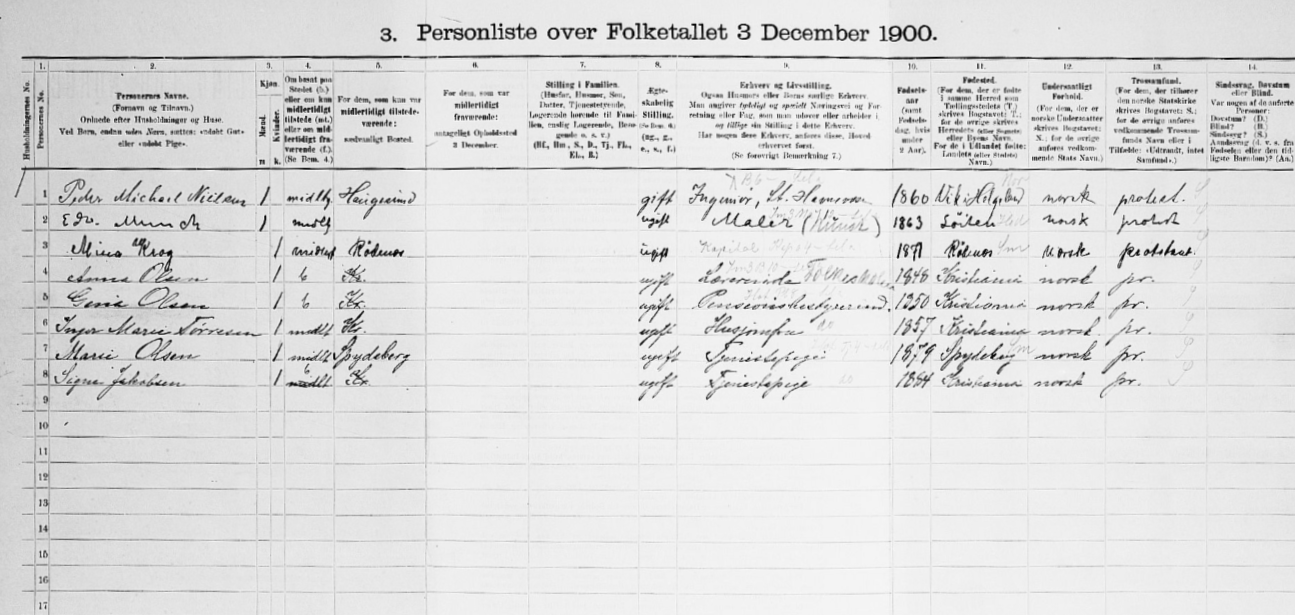

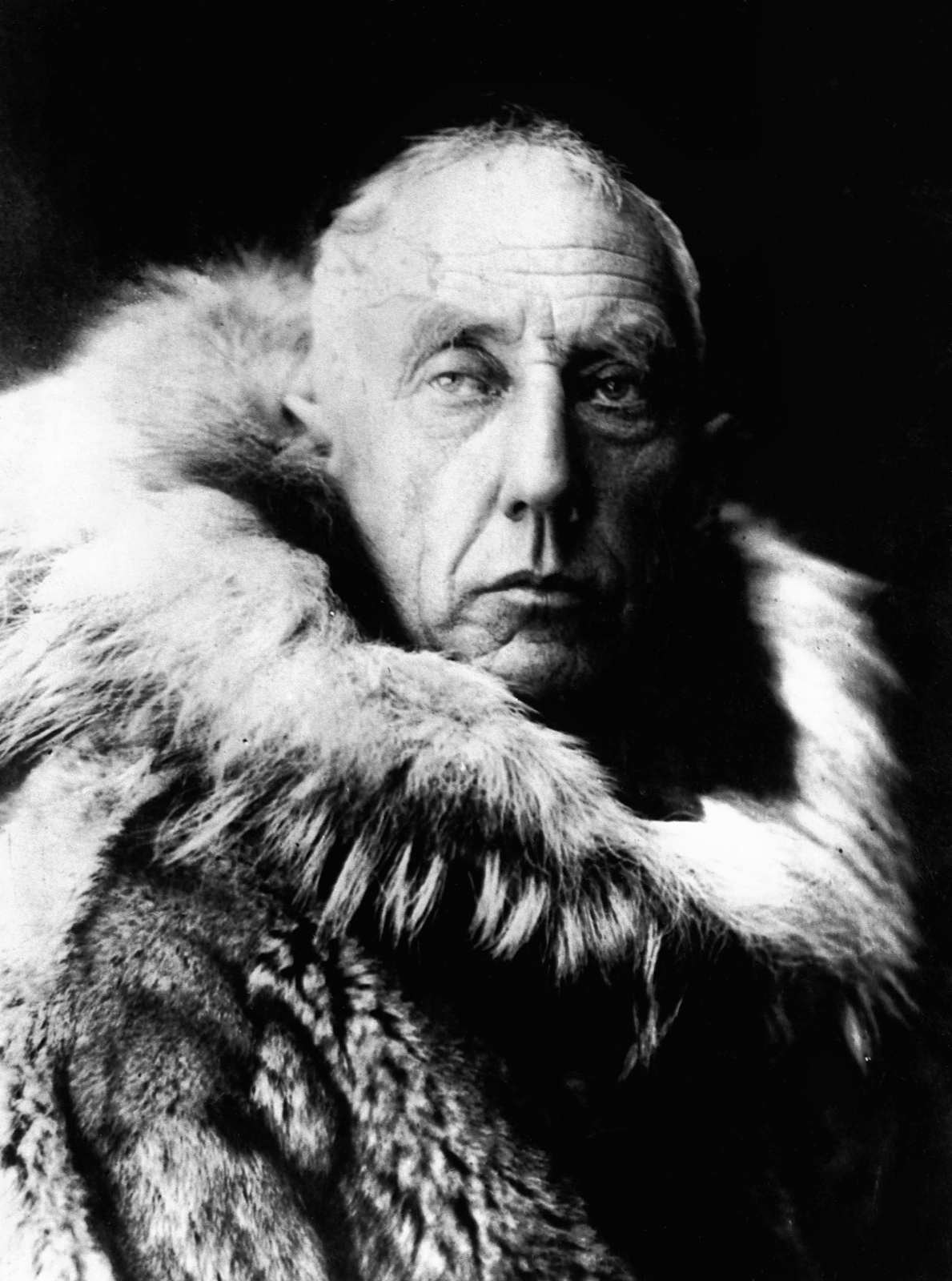



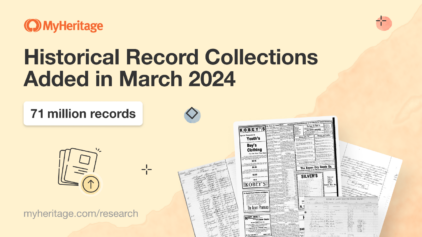

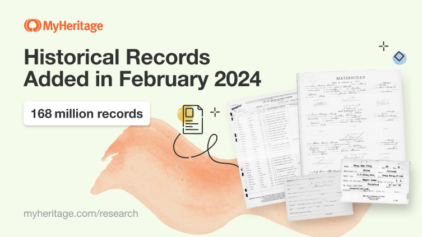

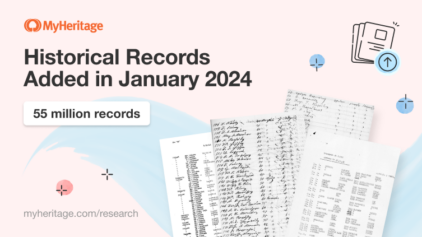

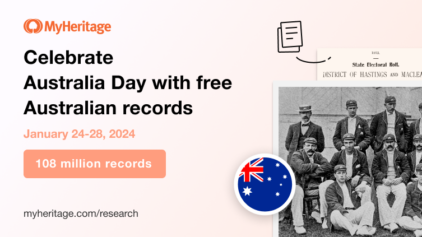
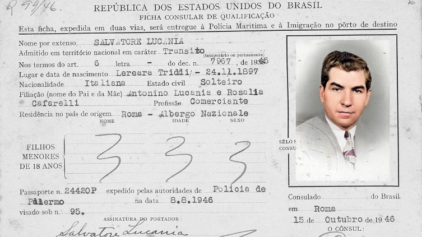
Nathalie Michaud
April 22, 2019
C est un excellent site de partage et de point de vues sur l histoire généalogique de nos origines
et de s y s entraidé pour la compréhension de la connaissance communiqué et le savoir entre
autre